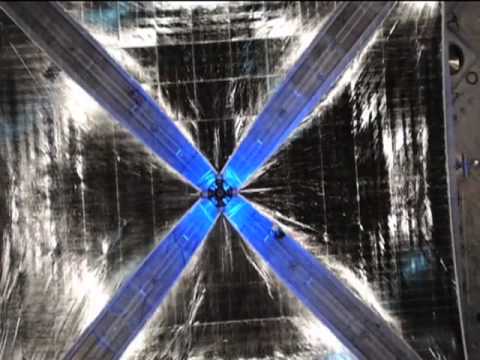ATK (Solar Sails, Coilable boom)- In the early 2000s, NASA made substantial progress in the development of solar sail propulsion systems for use in robotic science and exploration of the solar system. Two different 20-m solar sail systems were produced. NASA has successfully completed functional vacuum testing in their Glenn Research Center¹s Space Power Facility at Plum Brook Station, Ohio. The sails were designed and developed by Alliant Techsystems Space Systems and L¹Garde, respectively. The sail systems consist of a central structure with four deployable booms that support each sail. These sail designs are robust enough for deployment in a one-atmosphere, one-gravity environment and are scalable to much larger solar sails  perhaps as large as 150 m on a side. Computation modeling and analytical simulations were performed in order to assess the scalability of the technology to the larger sizes that are required to implement the first generation of missions using solar sails. Furthermore, life and space environmental effects testing of sail and component materials was also conducted. NASA terminated funding for solar sails and other advanced space propulsion technologies shortly after these ground demonstrations were completed. In order to capitalize on the $30 Minvestment made in solar sail technology to that point, NASA Marshall Space Flight Center funded the NanoSail-D, a subscale solar sail system designed for possible small spacecraft applications. The NanoSail-D mission flew on board a Falcon-1 rocket, launched August 2, 2008. As a result of the failure of that rocket, the NanoSail-D was never successfully given the opportunity to achieve orbit. The NanoSail-D flight spare was flown in the Fall of 2010. www.aec-able.com
Share
ATK04:33
Published on May 17, 2017

